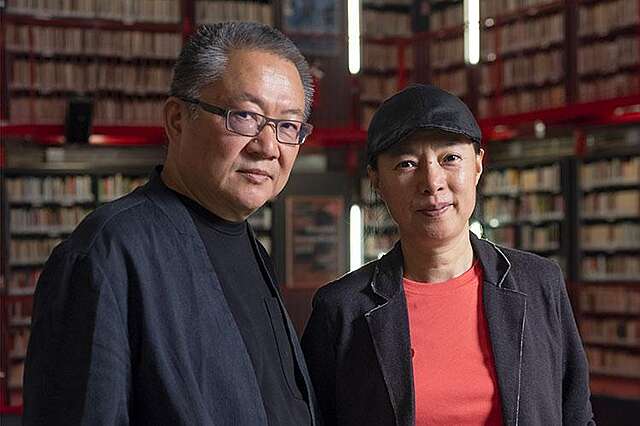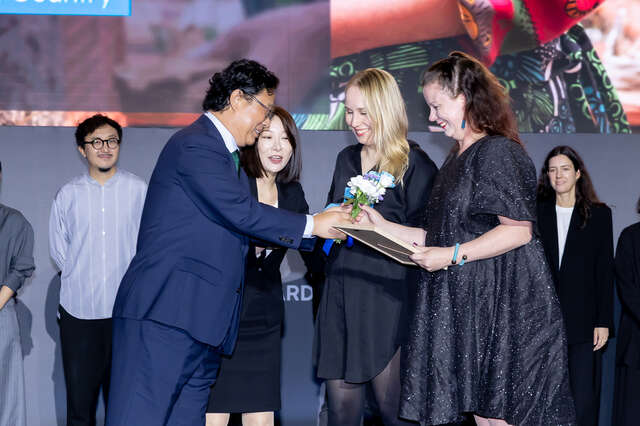Helsinki's architectural programme aspires to be a discussion opener on the significance of architecture in and for the city

The proposal for the new architectural programme states that architecture in Helsinki will be developed by focusing on architecture of the everyday, public urban spaces, climate-smart construction, participation of citizens and communication about architecture.
After long and thorough preparation, the proposal for the Helsinki architectural programme was unveiled on Thursday 18 April at the Helsinki Central Library Oodi. The programme, titled Helsinki rakentaa hyvää elämää (Helsinki builds good life), is meant to be a discussion opener of the significance of architecture in Helsinki and a tool for developing architecture further.
At the core of the programme is the belief that high-quality architecture and the planning of public urban spaces contribute to the residents’ well-being and at the same time to the appeal of Helsinki. For example, the new architecture and design museum, for which an architectural competition was recently launched, is expected to increase the city's attractiveness as a tourist destination, but the programme also strongly highlights the importance of everyday architecture.
At the launch event, Deputy Mayor Anni Sinnemäki pointed out that most of Helsinki's architecture is different from the landmark buildings that attract much attention.
"Helsinki architecture is also about rental housing, kindergartens, schools and other everyday places. It is good to stop and think about the meanings of spaces and how they shape us. All three of Helsinki's winners of the Finlandia Prize for Architecture, the renovated Käärmetalo and Olympic Stadium and the Children's Hospital, are also examples of everyday architecture, and the City of Helsinki was involved in all these projects," Sinnemäki said.
The development of the architectural programme has been guided by the City of Helsinki's urban strategy for 2021–2025. The programme states that architecture in Helsinki will be developed by focusing on architecture of the everyday, public urban spaces, climate-smart construction, participation of citizens and communication about architecture. Hanna Harris, Helsinki's Chief Design Officer, was in charge of preparing the programme with the participation of a wide range of experts from different city divisions.
“The architectural programme is based on the City’s strategic goals and city planning policies while also keeping global changes in mind. The programme features 27 measures for achieving the goals. Realising the programme is a joint effort for the whole city,” says Hanna Harris.
Finland’s national architectural policy programme for 2022–2035, Towards sustainable architecture, also provided a good basis for Helsinki's architecture programme. In her comments, Emma Harju, Senior Ministerial Adviser at the Ministry of Education and Culture, said that national and local actors can inspire each other.
"Good everyday life is also an important objective of the national architectural policy programme. It is possible – and natural – for the cities to promote this through their actions. The Helsinki architectural programme recognises the cultural value of architecture not only as cultural heritage but also as an environment for urban activities. It is important that this value is made visible by articulating and communicating it, as the Helsinki programme aims to do", said Emma Harju.
Everyday architecture, urban nature, climate-smartness and social responsibility
The Helsinki architectural programme is divided into four chapters on insightful everyday architecture, enjoying nature and urban space, climate-smart and sustainable construction, and creating great environment by utilising many methods. At the end of each chapter, from six to eight measures are identified as key to achieving the objectives set out in the programme. The richly illustrated publication also shows examples of buildings that meet the programme's objectives.
According to the programme proposal, Helsinki will be a place that offers everyday architecture that meets people's needs. In addition to housing, schools and kindergartens, the programme identifies public transport hubs and other public spaces as important places.
To improve the quality of housing, the programme proposes that the City's housing production will not include windowless rooms or mini-apartments of less than 20 square metres. The programme emphasises a variety of housing options, both in dwelling types and neighbourhoods, and architecture is seen as a way to elevate an area’s image and prevent social exclusion.
Helsinki intends to advance initiatives such as the preparation of colour guidelines for architecture and investing in suburban regeneration areas. Additionally, the City will hold architecture competitions on notable public buildings and the first blocks in new areas. Helsinki also pledges to plant street trees, replace lawns with meadows and increase urban gardening opportunities for residents. The number of green roofs will also be increased. Art and lighting will also be used to improve the quality of public urban space.
The City of Helsinki’s aim is to become carbon-neutral by 2030. In the architectural programme, architecture and construction are harnessed to resolve and adapt to the climate crisis. The programme states that lifecycle emissions of construction will be reduced further, and old buildings will be repaired and refurbished skilfully. Helsinki will prepare and adopt sustainability and climate criteria for architectural and plot conveyance competitions as well as investigate establishing a building element bank to promote the circular economy.
Helsinki will focus on the inclusion of children and young people and a child-oriented approach to city planning. The City will also focus on communicating about architecture to various target groups. Through communications, the programme will make visible the importance of architecture in the everyday lives of city dwellers and in the experiences of tourists alike.
The programme proposal will now proceed to the political decision-making process. Presented by Ville Lehmuskoski, Executive Director of the Urban Environment Division, it was on the agenda of the Urban Environment Committee on 23 April, but the approval was put on hold until the Committee’s next meeting.
Click here to read the Helsinki architectural programme (in Finnish)


